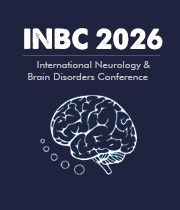Gait Disorders
Gait disorder walk, or gait, is the manner of walking. It is defined by the pattern of foot placement and the coordination of the feet with the arms and the rest of the body. Gait is usually unconscious and is a complex set of movements involving the coordination of the muscles of the lower and upper limbs, the torso, and the gaze. Disorders that affect gait include Parkinson’s disease, Huntington’s disease, and multiple sclerosis. Gait disorders in adults can have many causes such as muscle weakness or instability, arthritis, or a combination of these. Brain injuries or diseases that affect the control of movement and balance can cause gait disorders. Such disorders can occur due to a number of reasons, such as age, general weakness, lack of mobility or neurodegenerative diseases. Common examples of gait disorders include foot drop, dragging of the toes, circumduction, and shuffling. Foot drop is a condition that causes weakness in the ankle muscles and results in an inability to lift the front of the foot when walking. Dragging of the toes occurs when the person's feet keep sliding, instead of swinging, with each step. Circumduction is when the legs swing wide while walking and the feet barely clear the ground. Shuffling is when a person has difficulty rotating properly while walking, resulting in an awkward gait. Gait disorders can have a profound effect on an individual’s quality of life. People with gait disorders may experience fatigue and difficulty walking, as well as an increased risk of falls. In addition, mobility can be severely impaired and individuals may be unable to participate in activities that they once enjoyed. Fortunately, there are many treatments available for gait disorders. Physical therapy can help to improve strength, range of motion, and coordination. Assistive devices can also provide support and stability as needed. Additionally, bracing or orthotics may be prescribed to improve ankle stability and reduce the risk of falls. Surgical procedures may also be recommended in more severe cases. Overall, gait disorders can be highly disabling, but with targeted treatment and support, it is possible to greatly improve quality of life.

Joe Sam Robinson
Mercer University, United States
Robert B Slocum
University of Kentucky HealthCare, United States
George Diaz
Memorial Healthcare Systems, United States
Daniel Curry
Texas Children’s Hospital, United States
Zhenhuan Liu
Guangzhou University Chinese Medicine, China
Kiran Ghotra
Lake Erie College of Osteopathic Medicine, United States




Title : Atypical presentation of Juvenile myoclonic epilepsy in a 16-year-old female: A Case Report
George Diaz, Memorial Healthcare Systems, United States
Title : What we don’t know about hydrocephalus and It’s management
Daniel Curry, Texas Children’s Hospital, United States
Title : Artificial intelligence-driven DWI and FLAIR for the detection of early stroke changes: A systematic review
Shari L Guerra, The Medical City, Philippines
Title : Mapping neuroplasticity in occupational therapy: Evidence-based interventions with measurable neural outcomes
Jessica Marchant, Texas Woman's University, United States
Title : Non-pharmacologic management of orthostatic hypotension in inpatient rehabilitation: A quality improvement initiative
Laura Steakin, Rehabilitation Institute at Sinai, United States
Title : Non-pharmacologic management of orthostatic hypotension in inpatient rehabilitation: A quality improvement initiative
Mackenzie Weber, Rehabilitation Institute at Sinai, United States